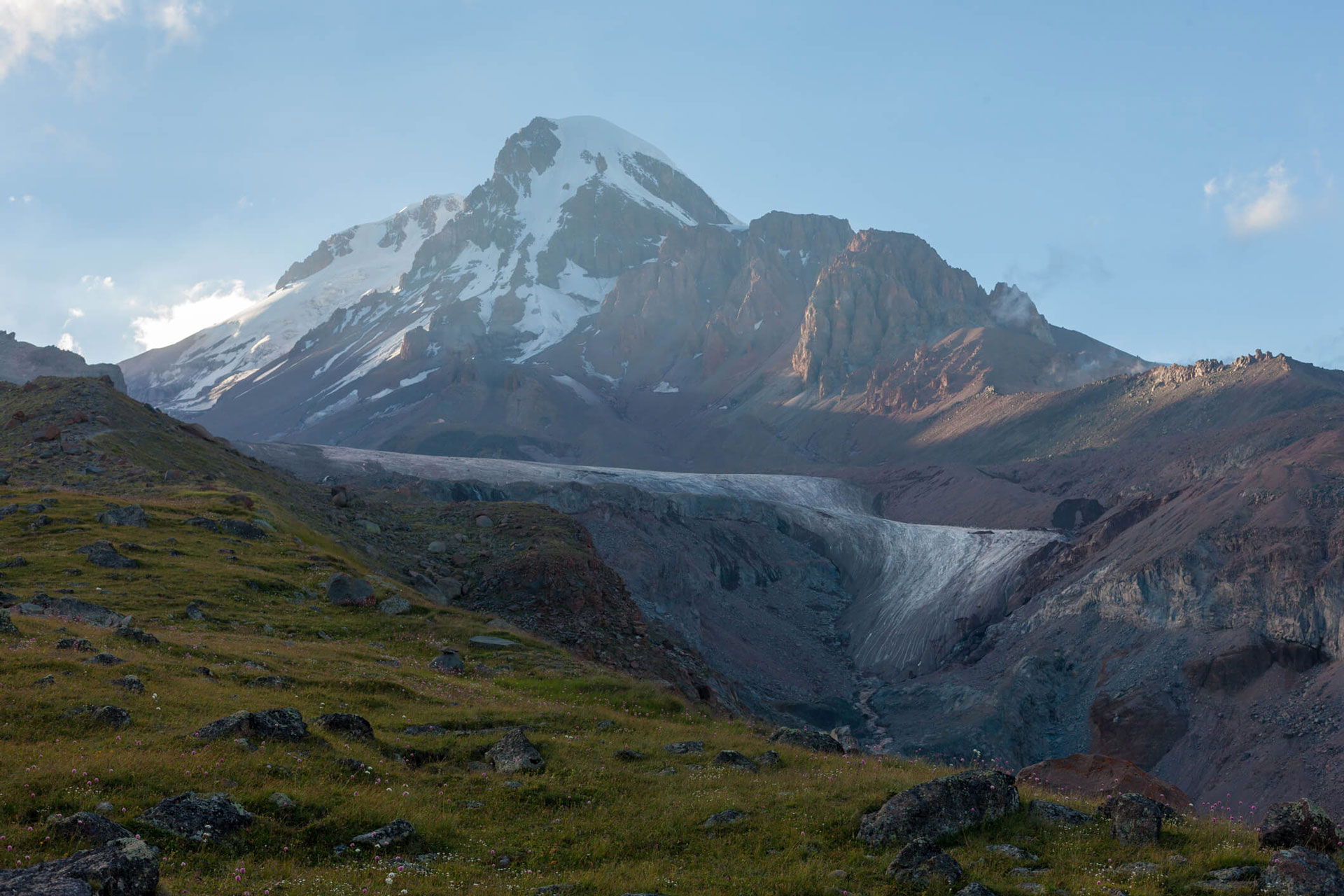When you think of the highest mountains in Europe, you’ll most likely think of Mont Blanc, or perhaps even the Matterhorn. Whilst those two mountains are certainly impressive in their own right, they’re not the highest ones in Europe – with only one of them even making it onto this list at all.
‘Europe’ is a pretty broad term, so by saying Europe, we mean the geographical continent of Europe. There is much debate as to what the highest peak in Europe is, as number one on this list (Elbrus) actually lies on the border between Europe and Asia within the Caucasus Mountain Range. We are also only including prominent peaks in this top 10. After a lot of confusing research, it became clear that many of the other write-ups on the highest peaks in Europe were actually including satellite summits.
“Mont Blanc is the highest peak in Western Europe, not the continent of Europe”
We’ve also not included peaks such as Mount Ararat into this top 10. Mount Ararat sits on the Asian territory of transcontinental Turkey.
It’s long been disputed as to where the European / Asian border actually cuts through the Caucasus mountain range. Modern day authorities now agree that Elbrus falls within the European side of the border. For this reason, Mont Blanc is the highest peak in Western Europe and Elbrus is the continent’s highest one overall.
It’s also got to be said that if you have the required mountaineering experience and are planning to get stuck in and work your way through a few of these peaks, then you should take a look at the UK Foreign and Commonwealth Office (FCO) warnings first. The FCO currently advise against “all but essential” travel within Georgia, where many of the peaks in this top 10 are located.
1) Mount Elbrus
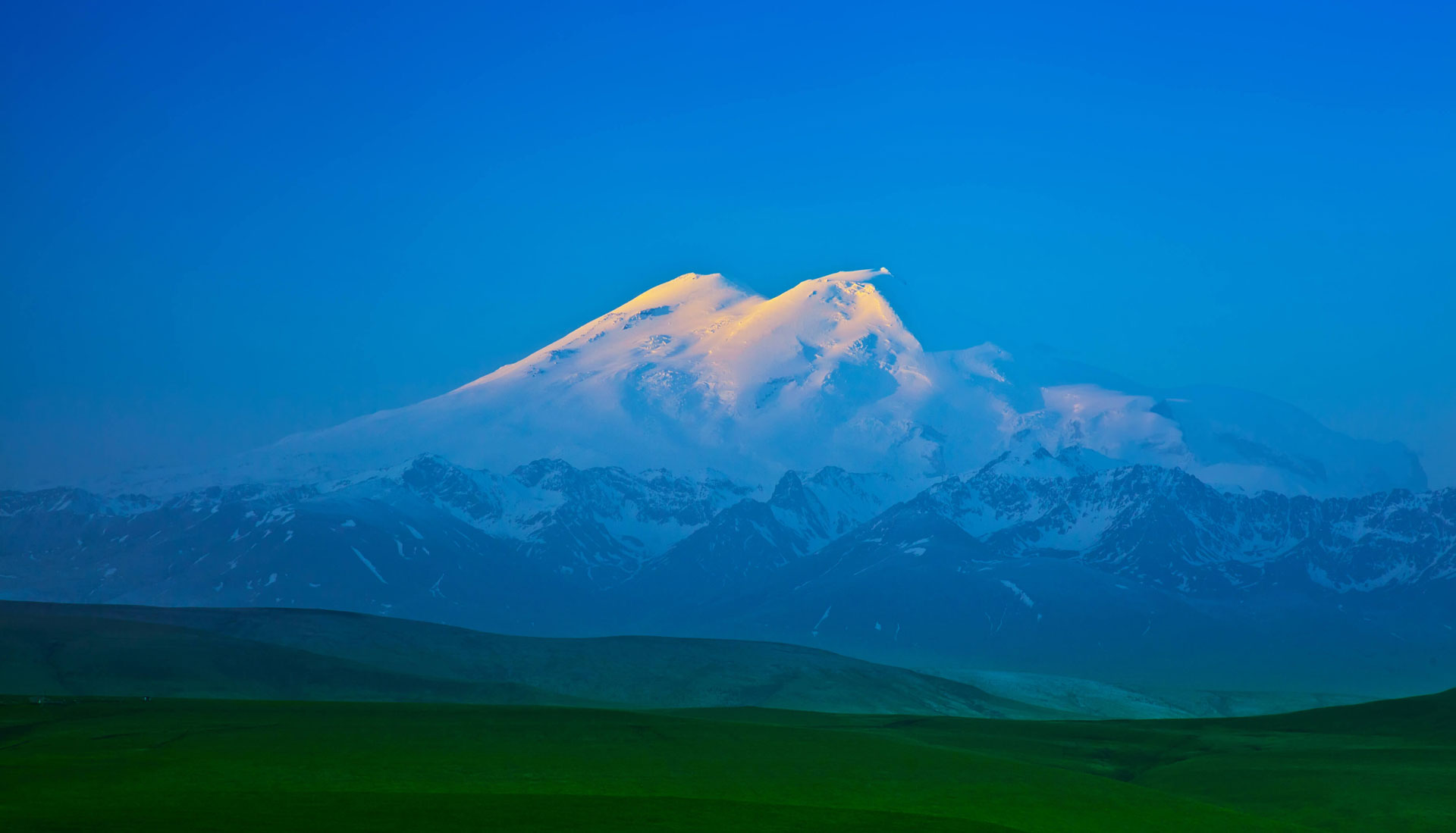
Height: 5,642m
Location: Russia
Hotly disputed number one in the highest mountains in Europe league table, Mount Ebrus also takes a spot within the acclaimed Seven Summits collection (a list made up of the highest mountains on each continent). Elbrus itself is part of the Caucasus Mountain Range, which sits in Southern Russia and forms the border between Georgia and Russia as well as the joining place of the European and Asian tectonic plates (hence the mountain range).
Elbrus is made up of two west (5,642) and east (5,621m) volcano summits. The smaller east summit was first climbed back in 1829 by Khillar Khachirov. It wasn’t for another 45 years before the higher west summit was climbed in 1874 by a British expedition led by Florence Crauford Grove.
If you fancy climbing Elbrus, expect it to take three – five days between June and September with the first few days spent acclimatising around the smaller peaks in the region. Although Elbrus is one of the easiest of the Seven Summits, the whole of Elbrus is glacial and therefore requires solid mountaineering technique (and/or a mountain guide) to summit.
2) Dykh-Tau
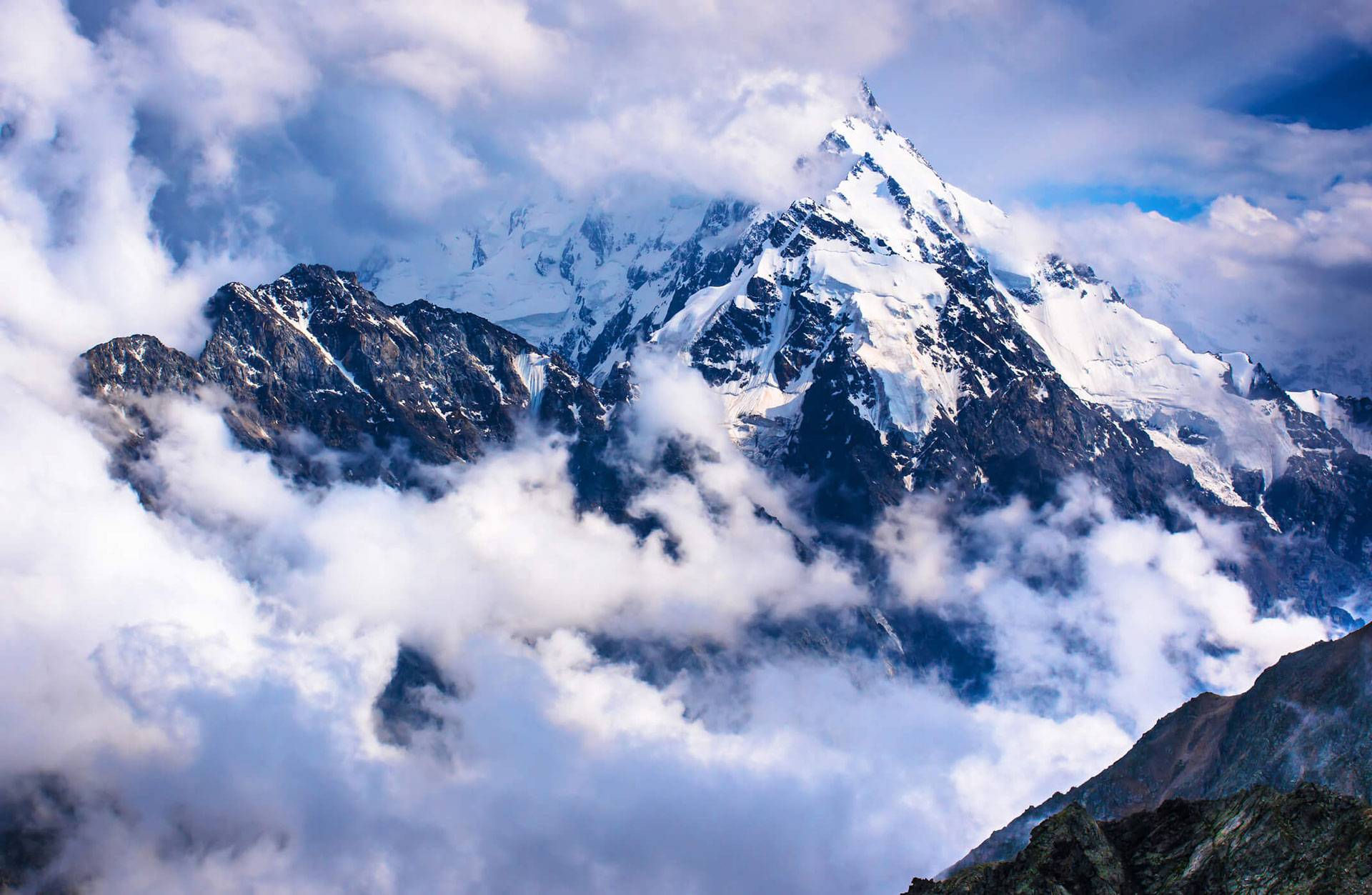
Height: 5,205m
Location: Russia
With a name deriving from a Turkic word, meaning Jagged Mount, Dykh-Tau is Europe’s second highest peak. Sat within the Caucasus Mountain Range, Dykh-Tau sits just 5km north of the Russian/Georgian border.
Being the second highest mountain in Europe, Dykh-Tau also takes its place on the Seven Second Summits. The Seven Second Summits is a list of the second highest mountains on each of the earth’s continents – a group of mountains that author Jon Krakauer said would be a harder challenge to climb than the Seven Summits. Dykh-Tau sticks to this trend as it is a much more technical climb than Elbrus, usually taking 10 days in total to climb.
3) Shkhara
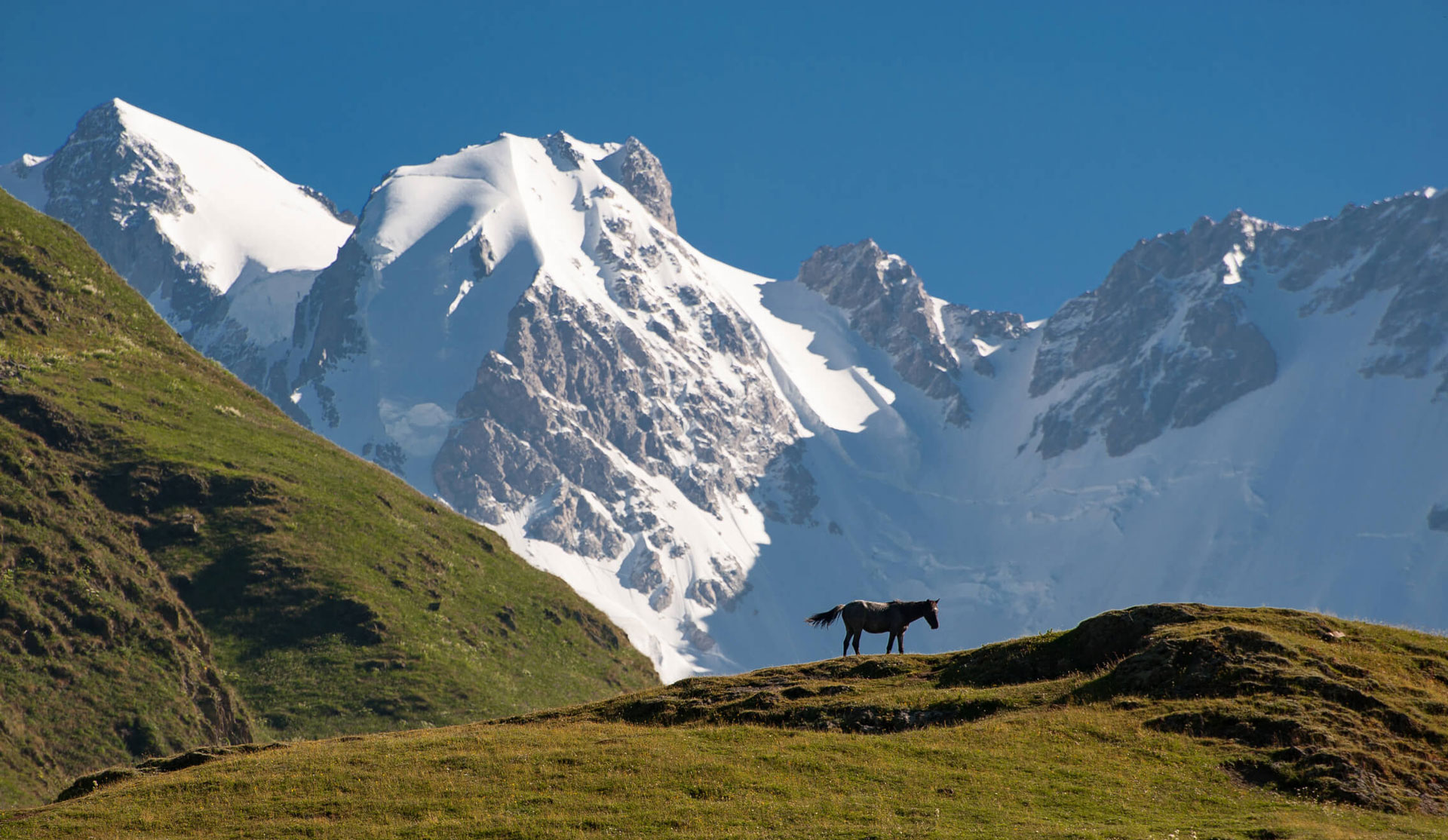
Height: 5,201m
Location: Georgia
Third on the list and the highest point in Georgia, Shkhara is another technically challenging climb that is situated within the Caucasus Mountain Range. Forming the highest point of the Bezengi Wall, a heavily glaciated, almost vertical 12km long ridgeline that creates a mecca for experienced mountaineers from around the word.
It was the North East Ridge of Shkhara that was first climbed, back in 1888, by a British and Swiss trio of Almer, Cockin and Roth. The North East Ridge is a technical climb in itself, giving significant challenges from the moment you step off the Bezengi Glacier. The climb of the NE Ridge follows the easiest route up to the summit of Shkhara and climbers will usually be expected to take two days on the route, with an overnight bivouac spent high on the ridgeline.
Although the NE Ridge is a fairly technical climb, it was the entire traverse of the 13km Bezengi Wall that was the crown jewel for mountaineers. This wall was first climbed back in 1938 by a group of strong Russian alpinists.
4) Koshtan-Tau
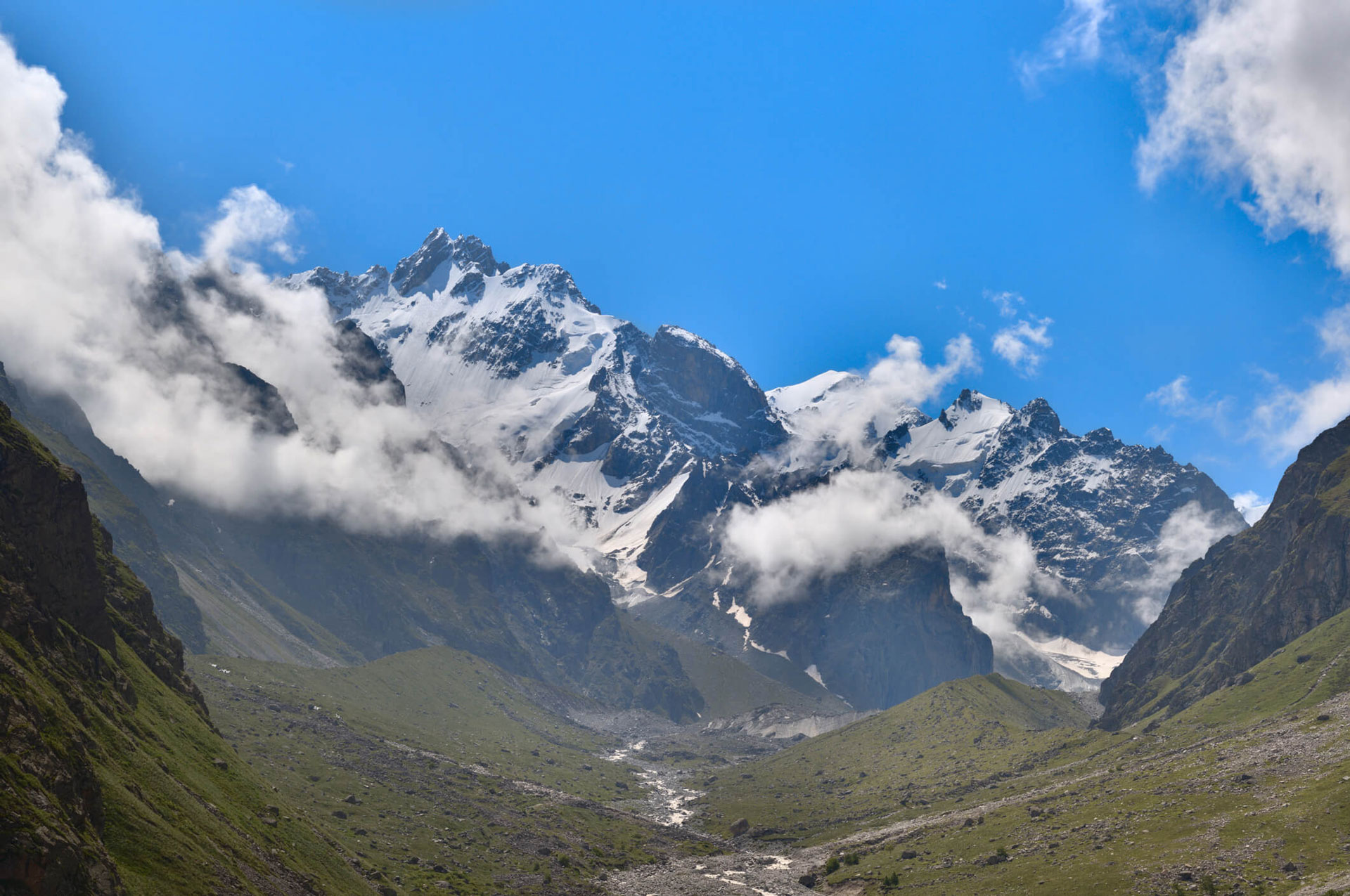
Height: 5,151m
Location: Russia
Koshtan-Tau also flanks the giant Bezengi range, alongside Dychtau and Shkhara. It’s another climbers dream, with steep slopes on all of its faces. The first ascent was made back in 1889 by Woolley via the North Crest, which is an amazing feat, given the simplicity of climbing equipment during those years. Climbers still flock to Koshtan-Tau these days, to climb on the historic ridges and spires that create the easiest way up the steep faces.

